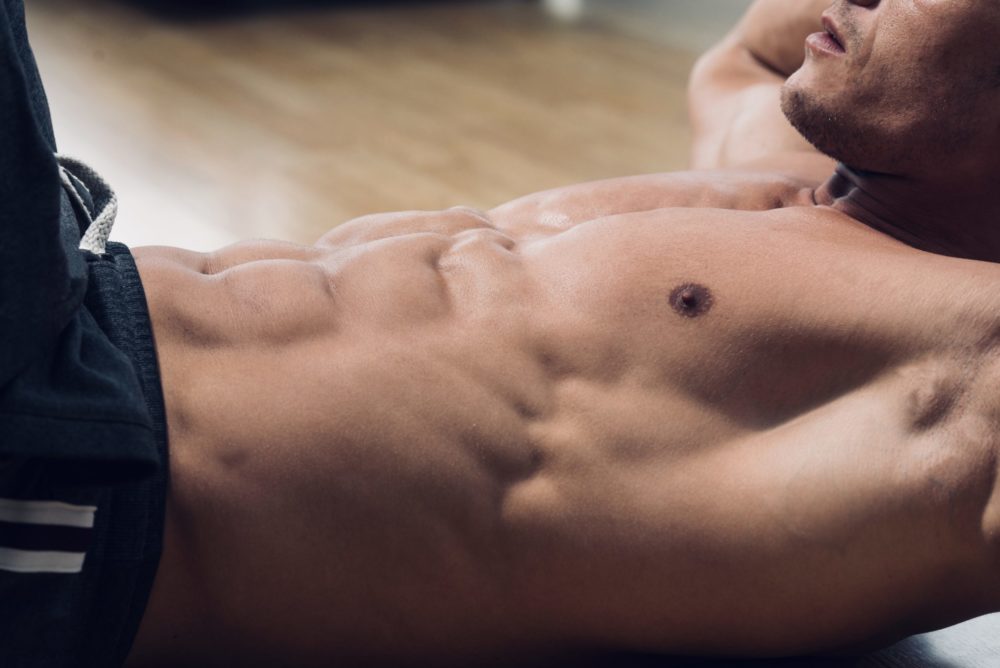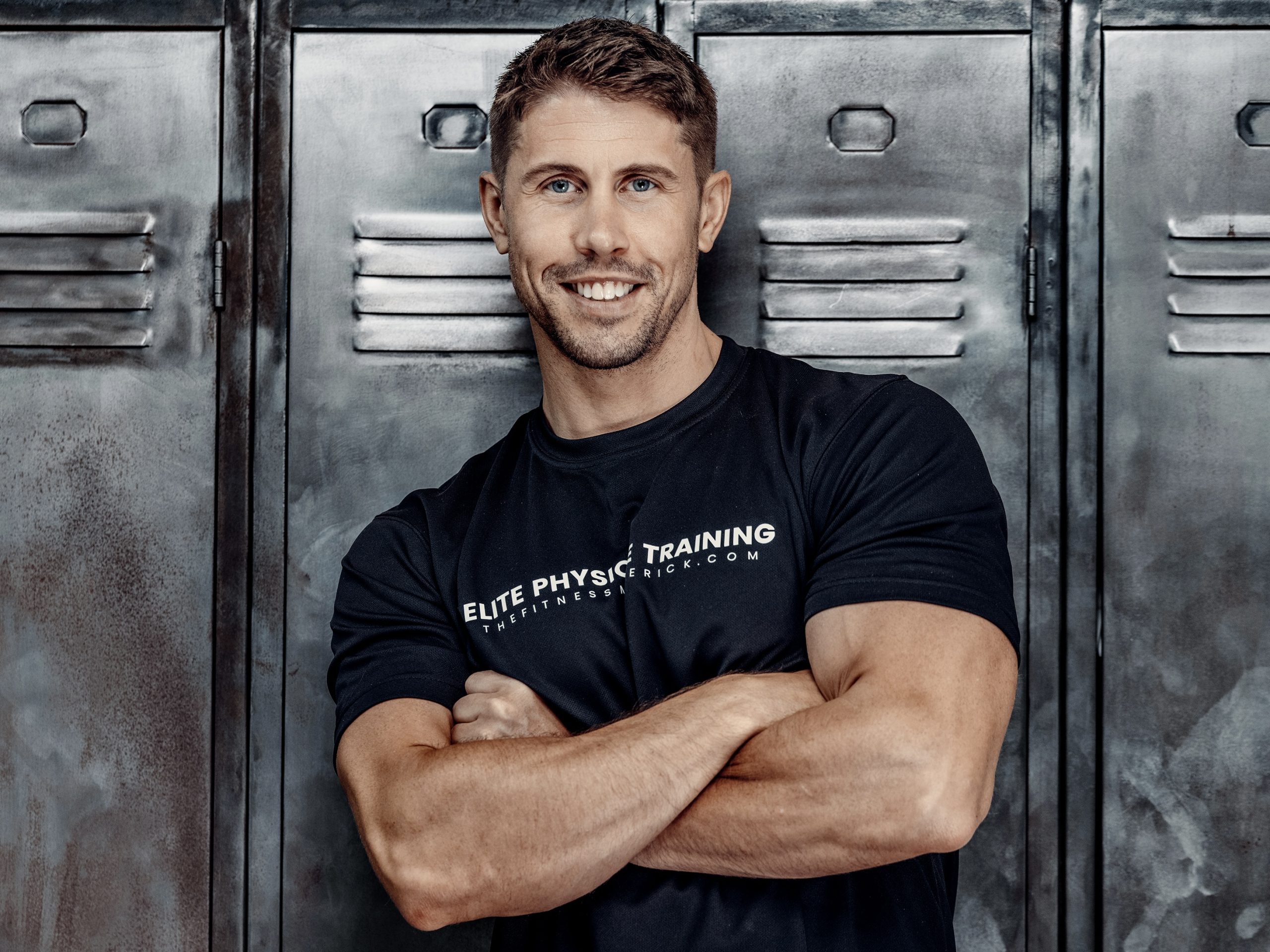The following is an excerpt from Ultimate Abs by Gareth Sapstead, available now via Human Kinetics, Amazon and all good book stores.
Of your entire core musculature, only four of these muscles are said to be part of your abdominals. And of your abdominals, only two of those are visible. In chapter 2, we discussed the benefits of training your deep internal obliques and transverse abdominis (TVA) from a visual perspective and to develop your Adonis belt, but only your rectus abdominis and external obliques are truly visible.
You might be thinking that focusing on core training would be most beneficial because it hits the most muscle mass. And you’d be right, it can be. Training your core means working everything that controls your spine and pelvis, teaching it to function as one unit. There are benefits to this both from a functional perspective and for health-based objectives. Working a larger amount of muscle also means you burn more calories and get a greater hormonal response. Both are good things, especially when trying to optimize your overall body chemistry to get lean and build muscle. But your goals are clear, and to get six-pack abs you need to focus on your priorities.
Let’s use an example of trying to build sleeve-popping biceps. If you use “big muscle mass” exercises like pull-ups, sure, your biceps will get a workout. But for most, these exercises alone aren’t enough to put a significant amount of mass on your arms. Pull-ups can form part of the program, but more biceps-focused exercises are essential for reaching your goal of achieving big biceps.
Training for six-pack abs is the same. Core exercises are to your abs as pull-ups are to your biceps, and ab-focused exercises are the equivalent of the biceps curl. Blending both approaches will produce the best results. Although exercises that are integrated and hit your core as a unit are included in this book, focused ab exercises are also essential for targeting that area. Choose exercises that are core focused based on how effectively they target your abdominals rather than your core overall.
The core exercises spotlighted later in this book have been included or adapted based on how effectively they work your abdominals. An approach that blends exercises higher on the functional continuum with exercises that produce the most muscle activation will produce the most impressive results.
Core Exercises and Training
Core training primarily focuses on the development of core and spinal stability. Spinal stability refers to how well you can maintain a certain spinal position in the presence of change. We touched on this in chapter 2, and using our definition of the core, this can be further extended to the pelvis. When an external force comes into play, your spine and pelvis need to be able to maintain their position. If they are not, they are more prone to acute or chronic injury or excessive wear and tear. This is vastly important from a health perspective. From a performance perspective it’s important too, because if you can resist an external force, you’re not only less likely to get injured or crushed by an opponent, you’re also in a better position to express force in the opposite direction. The better you can absorb, the more you can give back.
Resisting change can also be described as being able to fight against or oppose change. A term often used to describe core exercises is antiexercises: antiextension, antirotation, and so on. Anti means to oppose something, which in this case is the position of your spine or pelvis in the presence of change. Chapter 10 will cover antimovements in more detail, but for now consider core exercises as those with the purpose of developing a stable spine and pelvis by resisting movement. Examples of this include the following:
- Resisting lumbar extension and anterior pelvic tilt (APT) during a plank: A traditional front plank is an example of such an event. Positioning a weight on your lumbar region applies an additional force, and if it’s not resisted, it takes you farther into lumbar extension and anterior pelvic tilt—your pelvis tilting forward. It is the job of the muscles that create a pulling force in the opposite direction (lumbar flexion, posterior pelvic tilt) to resist lumbar extension and APT. From our discussion of abdominal anatomy, you know that your rectus abdominis in particular plays a large role here as well as other muscles working in unity.
- Resisting lateral flexion of the spine and lateral hip movement while carrying heavy groceries: Every time you carry a bag in one hand or pick up a suitcase this is happening. Swapping that heavy grocery bag for an even heavier dumbbell and performing a one-handed farmer’s carry applies an additional force that, if not resisted, would pull you farther into spinal lateral flexion and hip adduction (towards the midline of the body). Moving the weight farther from your center of mass increases the challenge too. Your TVA, internal and external obliques, quadratus lumborum (located on either side of your back abdominal wall), and glutes would work hard to resist these forces. If they didn’t, you’d crumble.
- Resisting spinal rotation when holding a cable during a chopping movement: These movements might be difficult to visualize now, but you’ll see excellent examples in chapters 9 and 10. The cable Pallof press is one of them. The greater the resistance coming from the cable, the greater the challenge of being rotated toward it. When the cable is held closer to your body, it is easier. Pressing the cable farther away makes it more difficult. Your obliques on the opposing side and TVA fire like crazy to resist and work with a host of other muscles around your spine and pelvis. There are plenty of scenarios in which you need to resist spinal rotation in both sporting and daily activities.
The previous examples are simple and don’t tell the full story of what’s going on. Many movements—both big and small—are being resisted, and a lot of muscles and other structures are being challenged. You now have a picture of what a core-focused training plan works toward.
Example of an exercise that, as well as the upper body, simultaneously trains an antiextension and antirotation core pattern.
Core Versus Ab Exercises and Training
Core exercises should be seen and programmed according to movements that relate to specific functional tasks. When selecting a core exercise for your program, you should be able to justify it in the following way:
“I’m using (exercise name) to train my ability to resist (spinal or pelvic movement), which will help (daily or sporting task).”
This might look something like the following:
“I’m using the dead-bug exercise to train my ability to resist rotation of my spine and pelvis, which will help improve my running economy.”
In this scenario, the dead bug, which can be an effective exercise for a variety of purposes, is considered a useful and functional exercise for runners training their core.
Ab training and exercise selection are muscle focused. Although we might understand the movement that is taking place (e.g., spinal flexion in an abdominal crunch), we might not necessarily choose that exercise for its ability to transfer to a particular daily or sporting task. A strong muscle will contribute to this transfer, but primarily we’re concerned with how that muscle looks. When selecting an ab exercise for your program, you should be able to justify it in the following way:
“I’m using (exercise name) to maximally target my (abdominal muscle name).”
This might look something like the following:
“I’m using ab wheel rollouts to maximally target my rectus abdominis.”
Example of an ab wheel rollout variation combining hamstring activation for enhanced rectus abdominis activation (via reciprocal inhibition of the hip flexors).
By now the difference between core and ab training should be clear. Because your goals are centered mostly on aesthetics, taking an ab-focused training approach will produce the best results. Secondary to that, core training should also be included for the other benefits outside of aesthetics. By blending ab and core training, you’ll develop an impressive set of abs that not only look good but perform just as well. This approach also adds variety to your routines so that developing ultimate abs is an enjoyable process.


